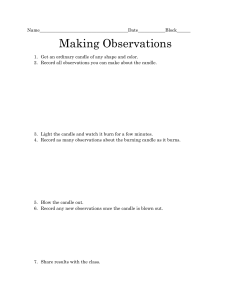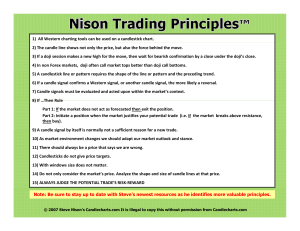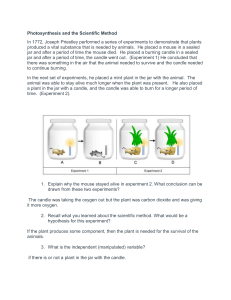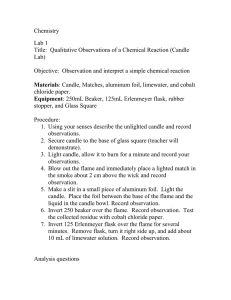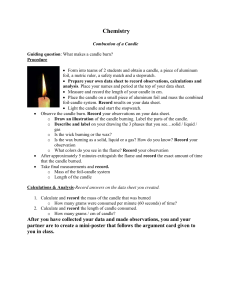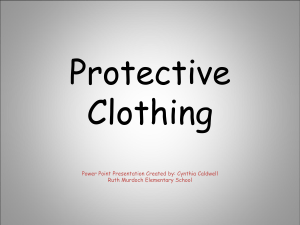F-1 Rising Water
advertisement
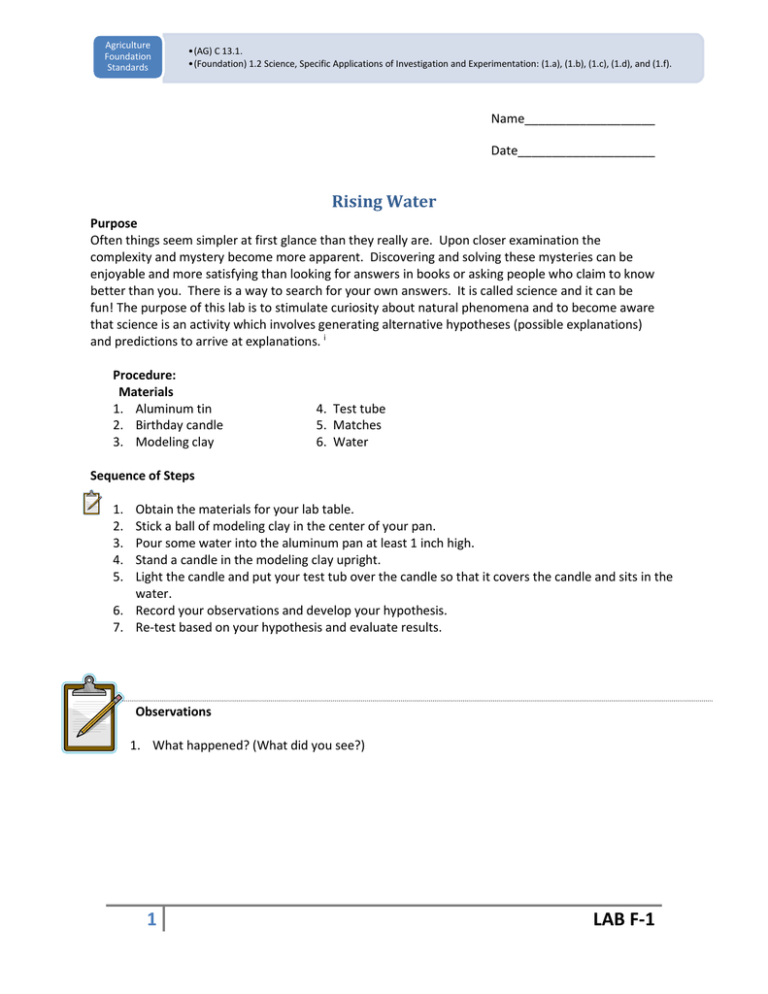
Agriculture Foundation Standards •(AG) C 13.1. •(Foundation) 1.2 Science, Specific Applications of Investigation and Experimentation: (1.a), (1.b), (1.c), (1.d), and (1.f). Name___________________ Date____________________ Rising Water Purpose Often things seem simpler at first glance than they really are. Upon closer examination the complexity and mystery become more apparent. Discovering and solving these mysteries can be enjoyable and more satisfying than looking for answers in books or asking people who claim to know better than you. There is a way to search for your own answers. It is called science and it can be fun! The purpose of this lab is to stimulate curiosity about natural phenomena and to become aware that science is an activity which involves generating alternative hypotheses (possible explanations) and predictions to arrive at explanations. i Procedure: Materials 1. Aluminum tin 2. Birthday candle 3. Modeling clay 4. Test tube 5. Matches 6. Water Sequence of Steps 1. 2. 3. 4. 5. Obtain the materials for your lab table. Stick a ball of modeling clay in the center of your pan. Pour some water into the aluminum pan at least 1 inch high. Stand a candle in the modeling clay upright. Light the candle and put your test tub over the candle so that it covers the candle and sits in the water. 6. Record your observations and develop your hypothesis. 7. Re-test based on your hypothesis and evaluate results. Observations 1. What happened? (What did you see?) 1 LAB F-1 2. What questions could you ask as to how your results might have happened? 3. What possible reasons (hypotheses) can you suggest for what happened? 4. Repeat your experiment to see if you obtain similar or different results. Do your results support or contradict your ideas in #3? Explain. 5. Where might have experimental error taken place? 6. Distinguish between a theory and a hypothesis. What is the difference? i (2008).Rising Water. Atwater High School Ag Department. 2 LAB F-1

